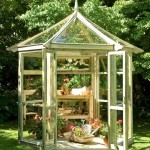Essential Aspects of Tire Bale House Plans
Tire bale houses, an innovative and sustainable building method, offer numerous advantages, including low cost, energy efficiency, and durability. To create a successful tire bale house, it is crucial to consider the following essential aspects:
Foundation and Soil Considerations:
The foundation of a tire bale house should be designed to withstand the weight of the structure and prevent any settling or shifting. The soil should be well-drained and compacted to ensure stability and avoid moisture penetration. Proper drainage systems and vapor barriers are vital to prevent water damage.
Tire Selection and Preparation:
Tires used in bale houses should be durable and free of any punctures or cracks. The size and type of tires will depend on the desired wall height and design. The tires must be cleaned and inspected before being stacked on the foundation.
Wall Construction:
Tire bales are stacked in alternating layers, with a staggered pattern to create interlocking walls. The bales are compacted tightly together to minimize voids and ensure structural integrity. Rebar or mesh reinforcement can be added between layers for increased strength.
Insulation and Airflow:
Tire bales provide excellent insulation due to the air pockets created within the rubber. However, additional insulation layers, such as straw bales or spray foam, may be required to achieve optimal energy efficiency. Proper ventilation is also essential to prevent moisture accumulation and maintain a comfortable indoor environment.
Roofing and Windows:
The roof of a tire bale house can be constructed using various materials, including metal, shingles, or thatch. The roof should have adequate overhangs to protect the walls from weather damage. Windows and doors should be properly sealed and insulated to minimize heat loss.
Exterior Finishing:
The exterior finish of a tire bale house can be customized to suit different aesthetics and preferences. Stucco, plaster, or earthbagging can be applied over the tires to create a smooth and durable surface. Landscaping and vegetation around the house can enhance its visual appeal and provide additional insulation.
Energy Efficiency and Sustainability:
Tire bale houses are known for their energy efficiency due to the thick, well-insulated walls. They can significantly reduce heating and cooling costs compared to conventional homes. The use of recycled tires also promotes sustainability and reduces waste.
Additional Considerations:
When planning a tire bale house, it is important to consider local building codes and consult with experienced professionals. Architectural plans should be drawn up to ensure structural integrity and meet code requirements. Local zoning regulations may also need to be taken into account.
Conclusion:
Tire bale house plans offer a unique and sustainable approach to building. By carefully considering the essential aspects discussed above, it is possible to create durable, energy-efficient, and affordable homes that promote environmental responsibility.

Tire Bale Home Engineering Pse Consulting Engineers Inc

Tire Bale Earthship Building An Earth Bermed House

Tire Bale Earthship Building An Earth Bermed House

A Passive Solar Tire Bale Home In Colorado Natural Building Blog

Tire Bale Earthship Building An Earth Bermed House

How To Build A House Using Free Tires Home Design Find

Building A Tire Foundation Ebook Blue Rock Station

Tire Bale Earthship Building An Earth Bermed House

How To Build A House Using Free Tires Home Design Find

How To Build A House Using Free Tires Home Design Find








